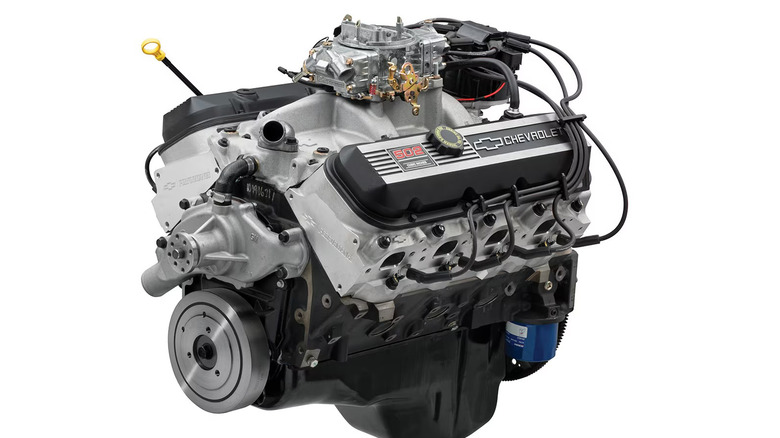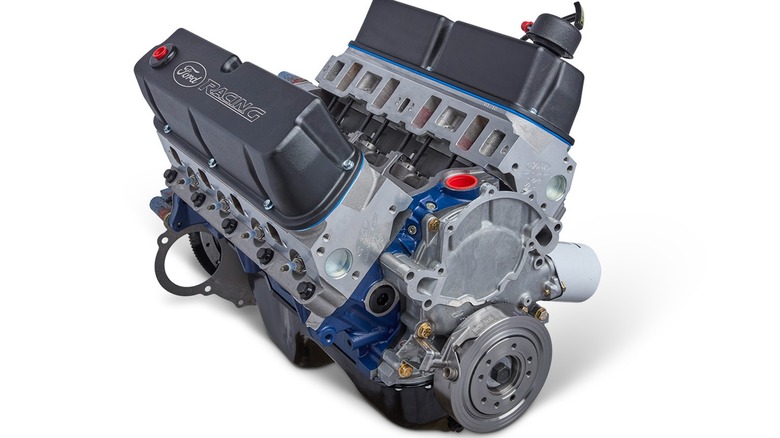Long Block Vs. Crate Engine: What's The Difference?
The first thing you should know about crate engines is that most manufacturers offer a variety of options to best suit the needs of their customers. You might think of a crate engine as a complete engine assembly received from an automaker ready to install in an engine bay and start up after adding coolant and oil.
In reality, the thing that makes them "crate engines" is that they arrive at the customer's location in wooden shipping crates. Other than that, crate engines come from various sources including automakers, engine remanufacturing companies, and custom engine builders using proprietary castings created in their factories. Crate engines can also be complete engines like we often think of them, or they can be provided as long-block or even short-block assemblies.
We've discussed the differences between long-block and short-block engines before. So, we'll limit this discussion to the difference between complete crate engines and long blocks, and what to expect when you order one.
Is a complete crate engine better than a long block?
The biggest advantage of buying a complete crate engine is that it comes with everything needed to run, other than a fuel pump, starter, and required electronics such as the ECU. As such, affordable V8 crate engines from Ford, Chevrolet, and other sources are popular options when performing classic car engine swaps.
A long-block engine also arrives at your location attached to a wooden shipping crate due to its weight and awkward nature. Long blocks typically include the engine block and internal components such as the crankshaft, connecting rods, and pistons. In addition, it will have the cylinder head or heads attached along with the required camshaft(s) and timing chain/belt in most cases.
The most common use for long-block crate engines is replacing a worn or damaged engine with compatible accessories. In that scenario it's possible to reuse the existing intake manifold and fuel system from the old engine if it's in good condition. The ability to reuse some of the components from the old engine often makes the long block a more economical choice.

